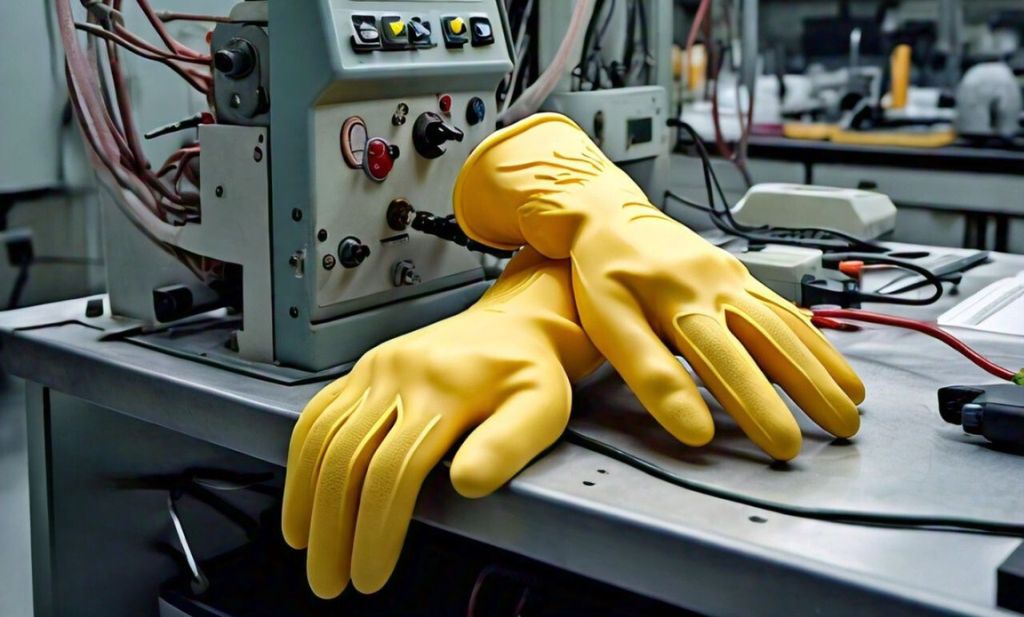- May 14, 2024
- by Emmanuel
- Calibration
The Benefits of Rubber Glove Testing
Ensuring Safety and Quality in Electrical Work
As an electrical professional, you’re well aware of the critical role that personal protective equipment (PPE) plays in ensuring safety during electrical work. One essential component of PPE is rubber insulating gloves. These gloves protect workers from electric shock and arc flash incidents, making them indispensable for anyone working with live electrical systems.
Meeting Industry Standards and Regulations
One of the primary benefits of rubber glove testing is ensuring that products meet industry standards and regulations. These standards define the performance requirements for rubber insulating gloves, including their electrical resistance, physical properties, and overall quality. Regular testing ensures that the gloves maintain their protective properties over time, providing peace of mind to both workers and employers.
Identifying Potential Defects and Weaknesses
Rubber glove testing allows you to identify potential defects and weaknesses in gloves before they reach the hands of workers. These defects could include cuts, punctures, or other damage that compromises the gloves’ integrity. By catching these issues early, you prevent accidents and ensure that workers have reliable protection.
Improving Product Performance and Durability
Regular testing not only verifies compliance with standards but also helps improve product performance and durability. By understanding how gloves perform under various conditions—such as exposure to heat, moisture, or chemicals—you can make informed decisions about their use. Additionally, testing provides valuable data for manufacturers to enhance glove design and materials, leading to better-performing products.
Compliance with OSHA Requirements
The Occupational Safety and Health Administration (OSHA) mandates that employers provide appropriate PPE to protect workers from electrical hazards. Rubber insulating gloves fall under this category. Regular testing ensures compliance with OSHA requirements, reducing the risk of penalties and legal issues.
How Does Rubber Glove Testing Work?
- Visual Inspection: Examine gloves for visible defects, such as cuts, cracks, or swelling.
- Electrical Testing: Measure the gloves’ electrical resistance using specialized equipment.
- Air Inflation Test: Inflate the gloves with air to check for leaks or weak spots.
- Dielectric Testing: Subject the gloves to high voltage to assess their insulation properties.
- Water Absorption Test: Determine how well the gloves resist water penetration.
- Physical Properties Testing: Evaluate factors like tensile strength, elongation, and tear resistance.
Conclusion
Rubber glove testing is essential for maintaining safety, complying with regulations, and ensuring the longevity of protective gear. Whether you’re an electrical worker, supervisor, or manufacturer, prioritize regular testing to keep everyone safe and productive.
Remember, safety starts with quality rubber insulating gloves! Contact us today for a quote or call 713.944.3139. Your safety is our priority!



